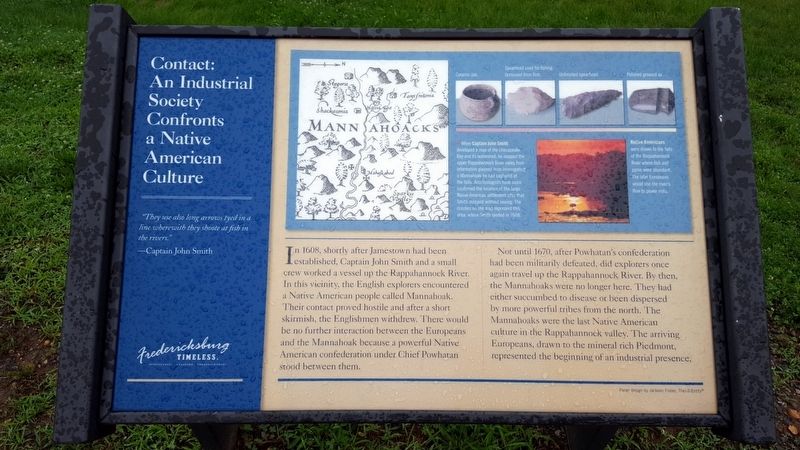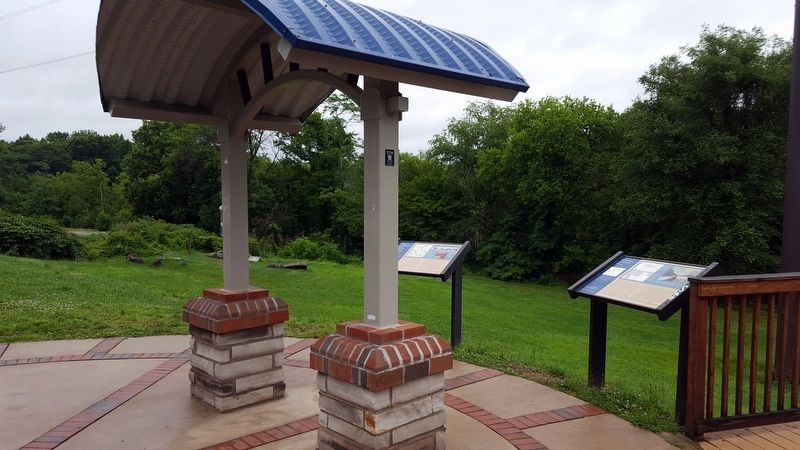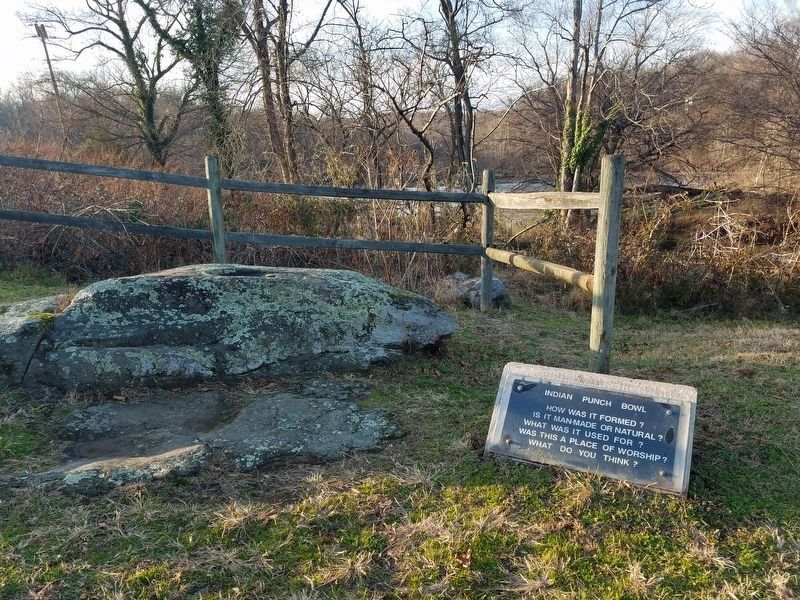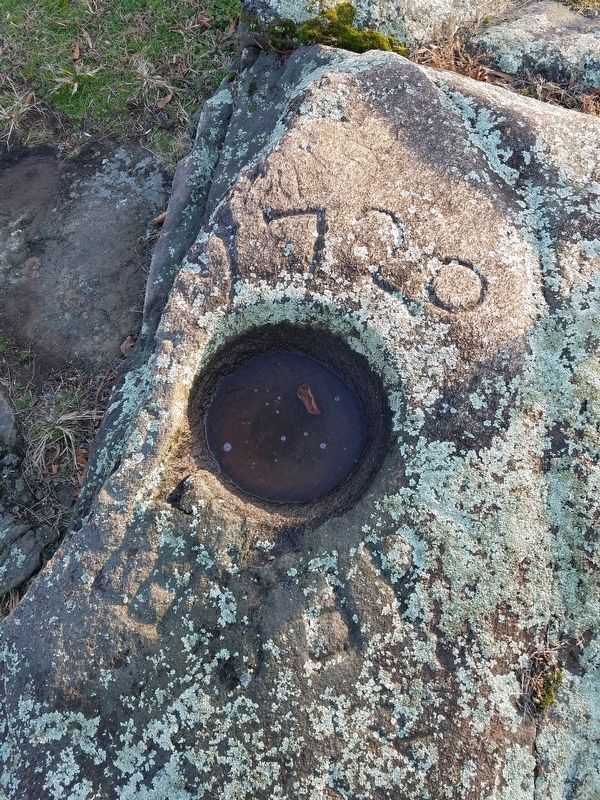Fredericksburg, Virginia — The American South (Mid-Atlantic)
Contact: An Industrial Society Confronts A Native American Culture
Fredericksburg: Timeless.
Inscription.
“They use also long arrows tyed in a line wherewith they shoot at fish in the rivers.” —Captain John Smith
In 1608, shortly after Jamestown had been established, Captain John Smith and a small crew worked a vessel up the Rappahannock River. In this vicinity, the English explorers encountered a Native American people called Mannahoak. Their contact proved hostile and after a short skirmish, the Englishmen withdrew. There would be no further interaction between the Europeans and the Mannahoak because a powerful Native American confederation under Chief Powhatan stood between them.
Not until 1670, after Powhatan’s confederation had been militarily defeated, did explorers once again travel up the Rappahannock River. By then, the Mannahoaks were no longer here. They had either succumbed to disease or been dispersed by more powerful tribes from the north. The Mannahoaks were the last Native American culture in the Rappahannock valley. The arriving Europeans, drawn to the mineral rich Piedmont, represented the beginning of an industrial presence.
(captions)
When Captain John Smith developed a map of the Chesapeake Bay and its watershed, he mapped the upper Rappahannock River valley from information gleaned from interrogating a Mannahoak he had captured at the falls. Archeologists have since confirmed the location of the large Native American settlement sites that Smith mapped without seeing. The crosses on the map represent this area, where Smith landed in 1608.
Native Americans were drawn to the falls of the Rappahannock River where fish and game were abundant. The later Europeans would use the river's flow to power mills.
Ceramic pot.
Spearhead used for fishing, fashioned from flint.
Unfinished spearhead.
Polished grooved ax.
Erected by Fredericksburg Economic Development and Tourism Office.
Topics and series. This historical marker is listed in these topic lists: Exploration • Native Americans. In addition, it is included in the Virginia, Fredericksburg: Timeless. series list. A significant historical year for this entry is 1608.
Location. 38° 19.183′ N, 77° 28.513′ W. Marker is in Fredericksburg, Virginia. Marker is on Riverside Drive, 0.1 miles west of Woodford Street, on the right when traveling west. Touch for map. Marker is in this post office area: Fredericksburg VA 22401, United States of America. Touch for directions.
Other nearby markers. At least 8 other markers are within walking distance of this marker. Harnessing The River's Power (here, next to this marker); Amoroleck Encounters John Smith (about 500 feet away, measured in a direct line); Veterans of Foreign Wars Eternal Flame (approx. ¼ mile
away); Killed in Action Memorials (approx. ¼ mile away); Transportation and Settlement (approx. ¼ mile away); Capt. John Smith (approx. ¼ mile away); Gari Melchers Home and Studio (approx. ¼ mile away); Bound for Freedom (approx. 0.3 miles away). Touch for a list and map of all markers in Fredericksburg.
Credits. This page was last revised on February 2, 2023. It was originally submitted on July 4, 2016, by Bernard Fisher of Richmond, Virginia. This page has been viewed 401 times since then and 23 times this year. Photos: 1, 2. submitted on July 4, 2016, by Bernard Fisher of Richmond, Virginia. 3, 4. submitted on March 4, 2017, by Kevin W. of Stafford, Virginia.



